Statistics: the branch of mathematics that deals with the collection, organization and interpolation of numerical data. Statistics is especially useful in drawing conclusions about a set of data from a sample of the data. (See mean, median, mode, normal distribution curve, sample, standard deviation and statistical significance.) Typical problem: estimating true value of parameters from a sample of data.

The paragraph above is a brief Internet summary from diction ary.com, but is fairly close to the orientation sheet passed around the classroom on the first day of a statistics course during my junior year at the University of Oregon. It was pretty droll stuff, but a required course for my major in architectural design and engineering. Oddly enough, it became one of the most interesting aspects of my writing 40 years later.
It all came home when I purchased a Custom Chronograph with printed screens back in the late 1970s. The system was fairly straight forward: Mount a screen in each set of two clips mounted at either end of a 2-foot piece of plywood. The clips were wired to a unit that read the velocity of the bullet, BB or arrow that was fired through both screens, starting and stopping an electric circuit that was converted to velocity in feet per second. Screens were replaced after each shot, and were sold in packs of 100 to 1,000.
Sometime after purchasing the Custom Chronograph, Dr. Ken Oehler came out with the new Oehler Model 33 Chronograph that not only determined velocity but also calculated Standard Deviation (SD) for each string of shots. Right off, writers around the industry began to assert that SD could be used to predict accuracy. That is, lower SD numbers implied better accuracy potential than higher SD numbers, which also implied a great deal of gullibility on behalf of anyone who might believe that – simply because there was no standard method to apply SD by the number of shots in each set or group, or the number of sets required to validate SD.
There were also other factors to consider other than velocity, such as variations in bullet weight/ diameter, charge weight and case weight/volume, that might collectively, or individually, affect accuracy, which is/was not to ignore the simple fact that some rifles don’t shoot some bullets well.
هذه القصة مأخوذة من طبعة July - August 2018 من Rifle.
ابدأ النسخة التجريبية المجانية من Magzter GOLD لمدة 7 أيام للوصول إلى آلاف القصص المتميزة المنسقة وأكثر من 9,000 مجلة وصحيفة.
بالفعل مشترك ? تسجيل الدخول
هذه القصة مأخوذة من طبعة July - August 2018 من Rifle.
ابدأ النسخة التجريبية المجانية من Magzter GOLD لمدة 7 أيام للوصول إلى آلاف القصص المتميزة المنسقة وأكثر من 9,000 مجلة وصحيفة.
بالفعل مشترك? تسجيل الدخول
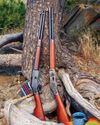
CIMARRON .32-20 Short Rifle & Carbine
In the heyday of Winchester Repeating Arms Company lever guns, it offered muskets, standard rifles, short rifles and saddle ring carbines.
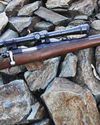
Remington's Model 722 and .222 Cartridge
It's easy enough to define what a varmint is, those pesky critters that tear up pastures, flower beds and all kinds of expensive crops people need for various reasons - most importantly, to make a living and/or something with which to feed themselves.

Coyote Bullets
What is Best for You?
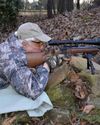
Remington's 5mm Rimfire Magnum
Shooting a Classic
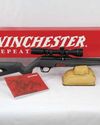
Winchester's New Wildcat
The Ultralight Rimfire Varmint Rifle

.223 Remington from .30-30 Winchester?
Multitasking for Varmints

LOADS FOR A .22 TCM
The .22 TCM first appeared commercially in 2012, chambered in a Rock Island Armory 1911-style handgun.
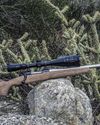
Everybody Loves Velocity
The 4,500-fps WSSM Project

A BOLT-ACTION FRANCHI 224 VALKYRIE
Testing New Loads
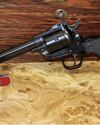
.22 Winchester Magnum Rimfire
Shooting Revolvers